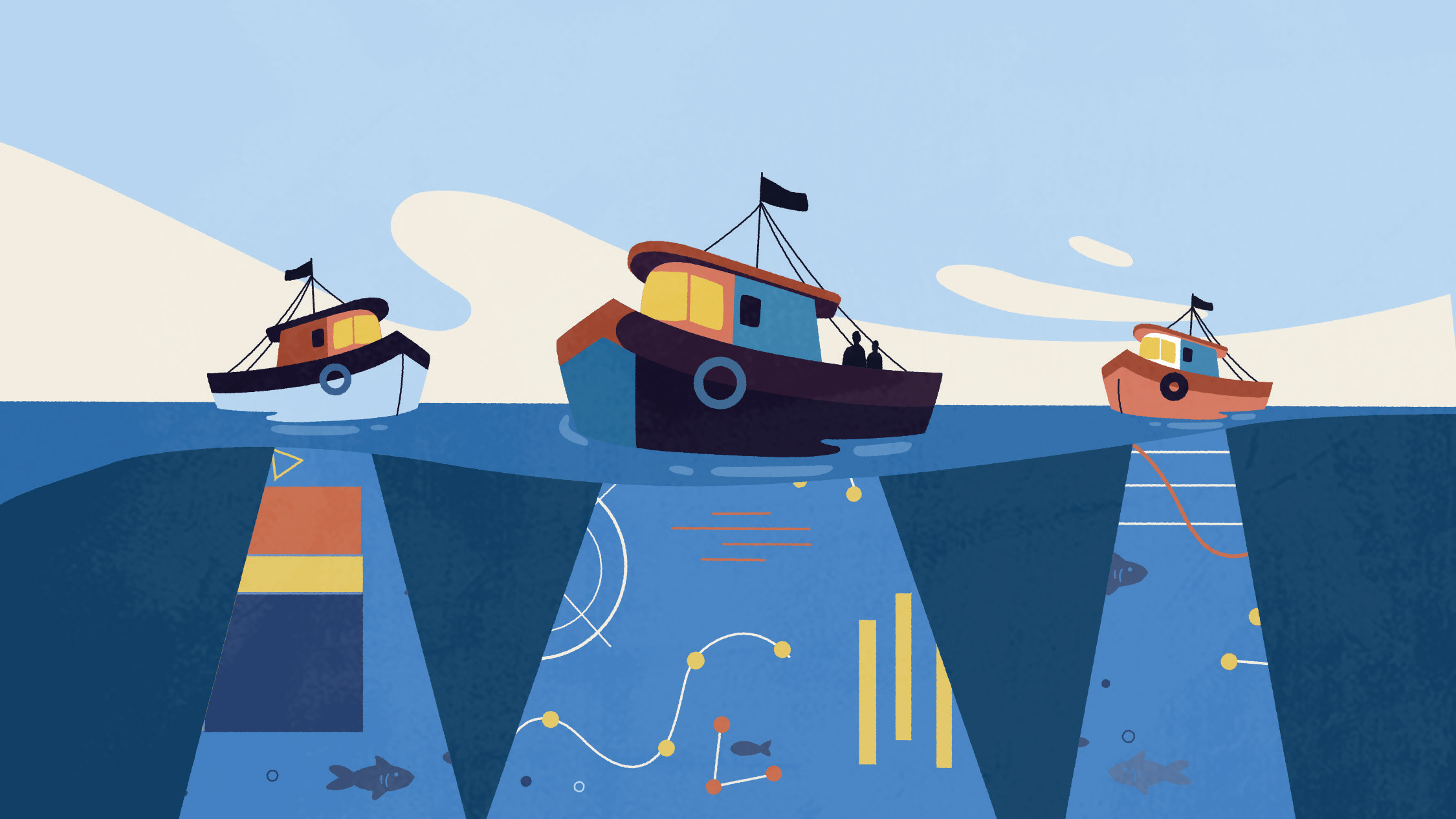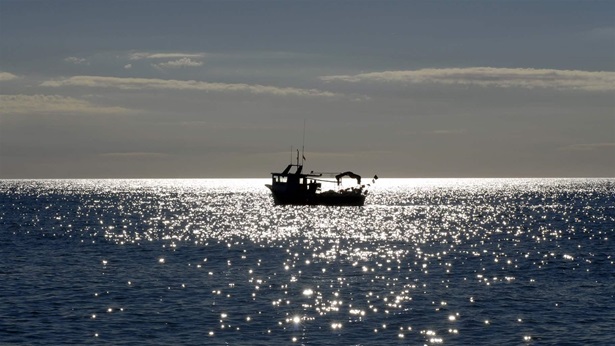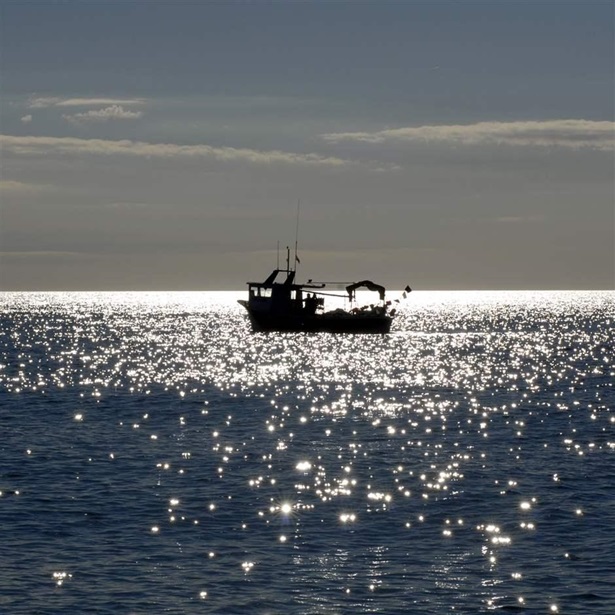5 Key Elements for Designing an Electronic Monitoring Program
A guide to improve oversight by regional fisheries management organizations

This fact sheet is one in a series outlining key elements for regional fisheries management organizations to consider as they develop electronic monitoring programs.
Across the globe, regional fisheries management organizations (RFMOs) are responsible for overseeing the catch of highly migratory fishes that traverse the waters of many nations. To ensure that these fisheries are sustainable, RFMOs need reliable data on what, how, and where fish are caught, and whether rules and regulations are being followed. Although many RFMOs have mandated that observers be on board purse seine vessels to gather such data, it can be challenging to collect it from other types of vessels, which in turn can make scientific and compliance processes less effective. As RFMOs seek to improve oversight of their fishing fleets, electronic monitoring (EM) can be an effective way to meet their goals.
EM systems—a combination of cameras, computers, GPS, and gear sensors on a vessel—can complement coverage by human observers. EM can also be used to collect data on fleets that have not been independently monitored. Many entities using these systems have created an EM program and set standards for how the information is collected, transferred, analysed, and stored. Managers, scientists, and vessel owners can then use this data to effectively manage the fisheries.
Many trials have shown that EM is a powerful driver of compliance and improved reporting. A recent study in Australia, for example, found that reports of discarded catch and interactions with protected species—including safe handling and release—significantly increased on vessels that had adopted the systems.1
EM programs are usually limited to a local or national fleet. RFMOs face challenges when designing and implementing the programs, including needing to incorporate a wide variety of fishing vessels, many nations, and large geographical areas. This fact sheet includes elements RFMOs should consider when creating an EM program and several examples of design options. It can serve as a resource for stakeholders, including political leaders, RFMO staff, national fishery managers, industry members, and non-governmental organizations.
Designing an EM program
RFMOs should consider five elements when creating an EM program. More details can be found in “Roadmap for Electronic Monitoring in RFMOs,” a 2020 report by CEA Consulting that was commissioned by The Pew Charitable Trusts.2
1. Stakeholder engagement, outreach, and communication
A transparent participatory process is vital when designing and implementing an EM program. Several studies show that programs that lack buy-in from stakeholders are not as successful as those that do.3 Since groups will have different concerns, it is critical to give each a platform to ask questions, pass along lessons they have learned, and jointly develop solutions. It is also important to establish feedback mechanisms that continue after the program is put in place.
2. Program objectives and coverage levels
Because an EM system can have a variety of uses, clear objectives are essential. The objectives inform every aspect of the program, from equipment and costs to levels of coverage and analysis of data. When identifying objectives, fisheries managers should consider what challenges they have with monitoring and what additional data can be collected economically, efficiently, and accurately by using an EM system.
Based on their objectives, managers will need to decide what percentage of the fleet will require EM systems and which activities will be recorded. Ideally, all vessels should be required to have an EM system, with all on-board activities captured electronically. Full coverage ensures proper oversight and data that represents the entire fishery.
3. Program structure and review
EM programs for RFMOs can fall into two categories: an RFMO-wide program, or a decentralized system made up of national or regional EM programs. Which type is implemented should be guided by the program’s objectives, the RFMO’s history, and geography. These elements will also inform contracting of vendors, sharing of costs, standards for hardware and data, and development of national legislation.
Programs should include regular evaluations to ensure that they remain effective as fishery conditions change. The evaluations will help RFMOs tackle unexpected challenges, improve the program’s adoption of new technology, and refine data analysis protocols. A review process can also secure additional industry support because it allows managers to demonstrate the program’s success.
4. Data collection, transmission, and storage
After deciding on objectives and the program’s structure, fishery managers should agree on how to collect, transmit, and store data. An effective EM program includes robust standards that ensure uniformity across member nations and fleets. These standards set a clear direction for the life cycle of EM footage, giving stakeholders more transparency and successful interoperability.
5. Data review and privacy
Extracting data and reviewing video footage are potentially the costliest elements of an EM program. RFMOs must carefully balance the need to meet minimum data standards and include relevant data fields against not overburdening the program with additional costs. An EM program will also need to determine how video is reviewed, what percentage of footage is analysed, and who does the reviews. Finally, fisheries managers should develop a data access chart that determines how to handle video footage and which entities can access this data, while considering potential privacy issues, including crew and data confidentiality.
While many elements of designing an EM program may seem operational or technical, stakeholders should be engaged throughout the design process. By exploring each element above, fisheries managers will help ensure that their EM program succeeds.
Endnotes
- T. Emery et al., “Changes in Logbook Reporting by Commercial Fishers Following the Implementation of Electronic Monitoring in Australian Commonwealth Fisheries,” Marine Policy 104 (2019): 135-45, https://www.sciencedirect.com/science/article/pii/ S0308597X18307218.
- M. Michelin, N. Sarto, and R. Gillett, “Roadmap for Electronic Monitoring in RFMOs,” (CEA Consulting, 2020), https://www.ceaconsulting.com/casestudies/the-pew-charitable-trusts/.
- R. Fujita et al., “Designing and Implementing Electronic Monitoring Systems for Fisheries: A Supplement to the Catch Share Design Manual,” Environmental Defense Fund, San Francisco (2018), http://fisherysolutionscenter.edf.org/sites/catchshares.edf.org/files/ EM_DesignManual_Final_0.pdf.


Electronic Monitoring Programs
Read all the electronic monitoring toolkit materials


America’s Overdose Crisis
Sign up for our five-email course explaining the overdose crisis in America, the state of treatment access, and ways to improve care
Sign upThis video is hosted by YouTube. In order to view it, you must consent to the use of “Marketing Cookies” by updating your preferences in the Cookie Settings link below. View on YouTube
This video is hosted by YouTube. In order to view it, you must consent to the use of “Marketing Cookies” by updating your preferences in the Cookie Settings link below. View on YouTube











